Information injection-pump assembly
ZEXEL
107692-5030
1076925030
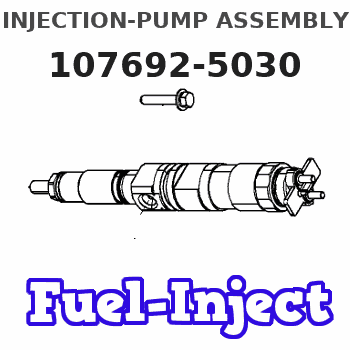
Rating:
Cross reference number
ZEXEL
107692-5030
1076925030
Zexel num
Bosch num
Firm num
Name
107692-5030
INJECTION-PUMP ASSEMBLY
FE6TI
FE6TI
Calibration Data:
Adjustment conditions
Test oil
1404 Test oil ISO4113 or {SAEJ967d}
1404 Test oil ISO4113 or {SAEJ967d}
Test oil temperature
degC
40
40
45
Nozzle and nozzle holder
105780-8250
Bosch type code
1 688 901 101
Nozzle
105780-0120
Bosch type code
1 688 901 990
Nozzle holder
105780-2190
Opening pressure
MPa
20.7
Opening pressure
kgf/cm2
211
Injection pipe
Outer diameter - inner diameter - length (mm) mm 8-3-600
Outer diameter - inner diameter - length (mm) mm 8-3-600
Overflow valve
131425-0520
Overflow valve opening pressure
kPa
255
221
289
Overflow valve opening pressure
kgf/cm2
2.6
2.25
2.95
Tester oil delivery pressure
kPa
255
255
255
Tester oil delivery pressure
kgf/cm2
2.6
2.6
2.6
RED3 control unit part number
407910-3
960
RED3 rack sensor specifications
mm
19
PS/ACT control unit part no.
407980-2
24*
Digi switch no.
14
Direction of rotation (viewed from drive side)
Right R
Right R
Injection timing adjustment
Direction of rotation (viewed from drive side)
Right R
Right R
Injection order
1-4-2-6-
3-5
Pre-stroke
mm
5.1
5.07
5.13
Beginning of injection position
Drive side NO.1
Drive side NO.1
Difference between angles 1
Cal 1-4 deg. 60 59.75 60.25
Cal 1-4 deg. 60 59.75 60.25
Difference between angles 2
Cyl.1-2 deg. 120 119.75 120.25
Cyl.1-2 deg. 120 119.75 120.25
Difference between angles 3
Cal 1-6 deg. 180 179.75 180.25
Cal 1-6 deg. 180 179.75 180.25
Difference between angles 4
Cal 1-3 deg. 240 239.75 240.25
Cal 1-3 deg. 240 239.75 240.25
Difference between angles 5
Cal 1-5 deg. 300 299.75 300.25
Cal 1-5 deg. 300 299.75 300.25
Injection quantity adjustment
Rack position
(16.3)
Vist
V
1.41
1.41
1.41
Pump speed
r/min
1400
1400
1400
Average injection quantity
mm3/st.
129
128
130
Max. variation between cylinders
%
0
-4
4
Basic
*
PS407980-224*
V
2.25+-0.
01
PS407980-224*
mm
3.1+-0.0
5
Injection quantity adjustment_02
Rack position
(7.1)
Vist
V
2.8
2.7
2.9
Pump speed
r/min
465
465
465
Average injection quantity
mm3/st.
18
16.2
19.8
Max. variation between cylinders
%
0
-10
10
PS407980-224*
V
V1+0.05+
-0.01
PS407980-224*
mm
5+-0.03
Remarks
Refer to items regarding the pre-stroke actuator
Refer to items regarding the pre-stroke actuator
0000001201
CU407980-224*
*
Actuator retarding type
*
Supply voltage
V
24
23.5
24.5
Ambient temperature
degC
23
18
28
Pre-stroke
mm
2
1.95
2.05
Output voltage
V
2.83
2.82
2.84
Adjustment
*
_02
CU407980-224*
*
Supply voltage
V
24
23.5
24.5
Ambient temperature
degC
23
18
28
Pre-stroke
mm
5.1
5.07
5.13
Output voltage
V
1.2
1
1.4
Confirmation
*
Remarks
Output voltage V1
Output voltage V1
_03
CU407980-224*
*
Supply voltage
V
24
23.5
24.5
Ambient temperature
degC
23
18
28
Output voltage
V
3.05
3.05
Confirmation of operating range
*
Test data Ex:
Speed control lever angle

N:Pump normal
S:Stop the pump.
(1)Rack position = aa
(2)Rack position bb
----------
aa=20mm bb=1mm
----------
a=27deg+-5deg b=37deg+-5deg
----------
aa=20mm bb=1mm
----------
a=27deg+-5deg b=37deg+-5deg
0000000901
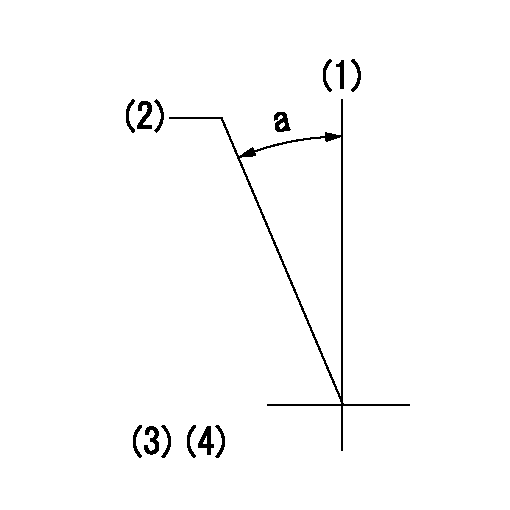
(1)Pump vertical direction
(2)Coupling's key groove position at No 1 cylinder's beginning of injection
(3)Pre-stroke: aa
(4)-
----------
aa=5.1+-0.03mm
----------
a=(20deg)
----------
aa=5.1+-0.03mm
----------
a=(20deg)
Stop lever angle
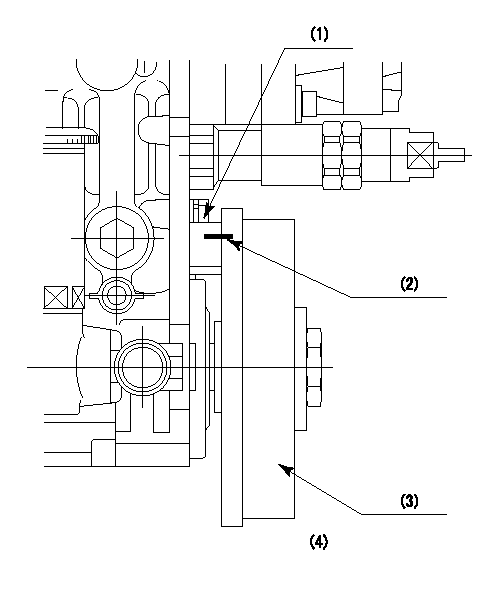
(1)Pointer
(2)Injection timing aligning mark
(3)Fly weight
(4)The actual shape and direction may be different from this illustration.
Operation sequence
1. Turn the prestroke actuator OFF.
2. Turn the camshaft as far as the No.1 cylinder's beginning of injection position.
3. Check that the pointer alignment mark of the injection pump and the alignment mark of the flywheel are matching.
4. If they are not matching, erase the alignment mark on the flywheel side, and stamp an alignment mark on the flywheel position that matches with the pointer side alignment mark.
5. Check again that the coupling's key groove position is in the No.1 cylinder's beginning of injection position.
----------
----------
----------
----------
0000001301
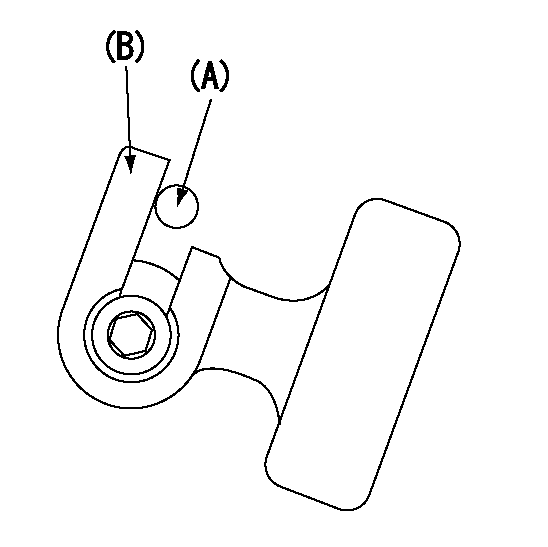
A : Stopper pin
B: Connector
----------
----------
----------
----------
0000001401
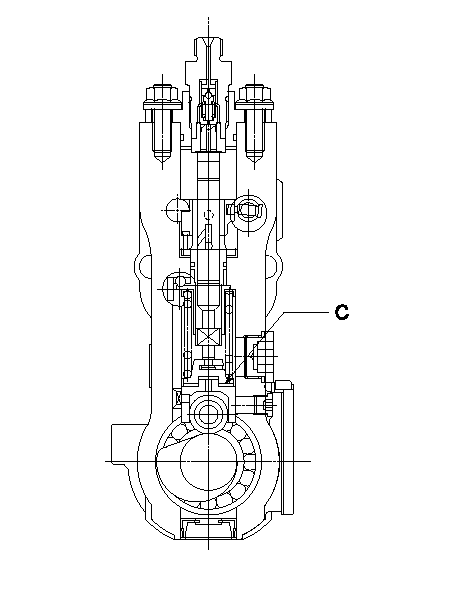
C:Shim
----------
----------
----------
----------
0000001501
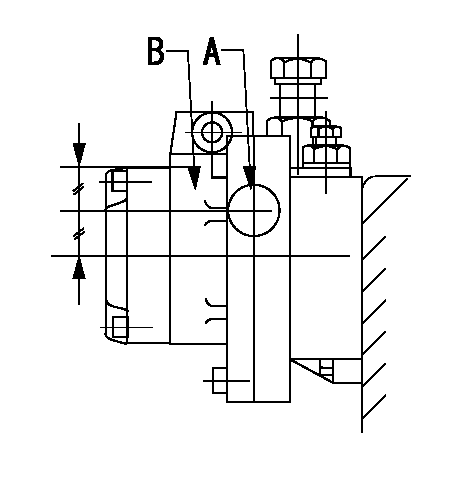
A:Sealing position
B:Pre-stroke actuator
1. When installing the pre-stroke actuator on the pump, first tighten the installation bolts loosely, then move the actuator fully counterclockwise (viewed from the drive side).
Temporary tightening torque: 1 - 1.5 N.m (0.1 - 0.15 kgf.m)
2. Move the actuator in the clockwise direction when viewed from the drive side, and adjust so that it becomes the adjustment point of the adjustment value. Then tighten it.
Tightening torque: 7^9 N.m (0.7^0.9 kgf.m)
3. After prestroke actuator installation adjustment, simultaneously stamp both the actuator side and housing side.
----------
----------
----------
----------
0000001701
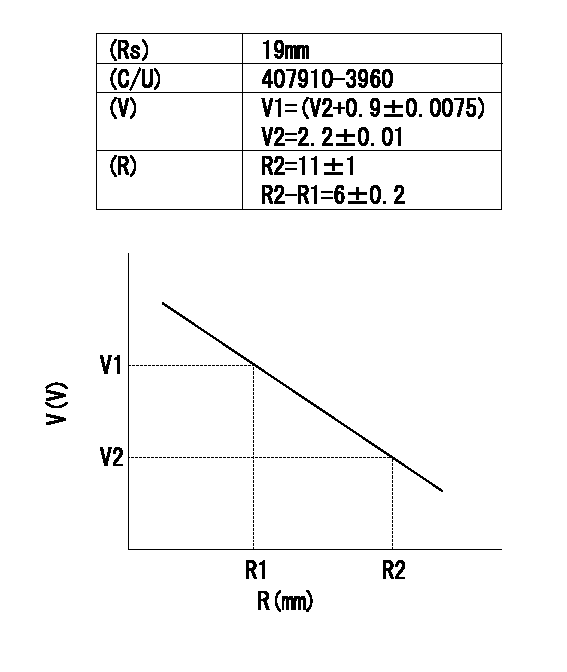
(Rs) rack sensor specifications
(C/U) control unit part number
(V) Rack sensor output voltage
(R) Rack position (mm)
1. Confirming governor output characteristics (rack 19 mm, span 6 mm)
(1)When the output voltages of the rack sensor are V1 and V2, check that the rack positions R1 and R2 in the table above are satisfied.
----------
----------
----------
----------
Information:
Gauges provide indications of engine performance. Be sure they are in good working order. You can determine what is the "normal" operating range by observing the gauges over a period of time.Noticeable changes in gauge readings indicate potential gauge or engine problems. This also applies to gauge readings that have changed significantly, but are still within specifications. The cause of any sudden or significant change in gauge readings should be determined and corrected. Contact your Caterpillar dealer for assistance as needed. Oil Pressure - Indicates engine oil pressure. The oil pressure should be greatest after starting a cold engine. Oil pressure should read between 240 and 480 kPa (35 and 70 psi) when: the engine is running between 600 and 2100 rpm with SAE 10W30 oil, at an operating oil temperature of 105°C (220°F). A lower pressure is normal at low idling speed.If the oil pressure gauge reading fluctuates after the load is stable:1. Remove the load.2. Reduce engine speed to low idle.3. Check and maintain the oil level.
Engine damage can result if the engine is operated with no oil pressure gauge reading. If no pressure is indicated, stop the engine.
Engine Oil Temperature - Indicates engine oil temperature. The purpose of the oil is to lubricate all moving parts inside the engine, and to cool the pistons and bearings. The oil cooler transfers the heat in the oil to the engine jacket water.If the cooling system cannot remove the necessary heat from the water, the engine oil cannot be properly cooled. Higher than normal oil temperature indicates a heat problem has occurred in the lubrication and/or cooling system, and a problem can occur with cylinder heads, liners, pistons or bearings. Maximum oil temperature is 110°C (230°F).Jacket Water Temperature - Indicates engine coolant temperature. It should normally indicate from 79 to 99°C (175 to 210°F). Higher temperatures may occur under certain conditions. Maximum allowable temperature is 105°C (220°F) with the cooling system pressurized.If the engine is operating above normal range and steam becomes apparent:1. Reduce the load and reduce the engine rpm.2. Inspect the engine for cooling system for leaks.3. Determine if the engine must be shutdown immediately or if the engine can be cooled by reducing the load. Inlet Air Temperature - Indicates inlet manifold air temperature. As the inlet air increases in temperature, the air expands, less oxygen is available in the cylinders, and less power is developed. As a result, at full speed position with a full load, the engine may be overloaded. Maximum inlet manifold air temperature is:* 110°C (230°F) for DITA engines* 163°C (325°F) for DIT engines Exhaust Stack Temperature - Indicates exhaust gas temperature. Maximum exhaust temperature is approximately 575°C (1065°F). Fuel Level - Indicates fuel level in the fuel tank. The electrically operated fuel level gauge registers only when the START/STOP (ignition) switch is ON. Fuel Pressure - Indicates fuel pressure to the injection pump. The indicator should register in the NORMAL (green) range.If the indicator moves to the OUT position or
Engine damage can result if the engine is operated with no oil pressure gauge reading. If no pressure is indicated, stop the engine.
Engine Oil Temperature - Indicates engine oil temperature. The purpose of the oil is to lubricate all moving parts inside the engine, and to cool the pistons and bearings. The oil cooler transfers the heat in the oil to the engine jacket water.If the cooling system cannot remove the necessary heat from the water, the engine oil cannot be properly cooled. Higher than normal oil temperature indicates a heat problem has occurred in the lubrication and/or cooling system, and a problem can occur with cylinder heads, liners, pistons or bearings. Maximum oil temperature is 110°C (230°F).Jacket Water Temperature - Indicates engine coolant temperature. It should normally indicate from 79 to 99°C (175 to 210°F). Higher temperatures may occur under certain conditions. Maximum allowable temperature is 105°C (220°F) with the cooling system pressurized.If the engine is operating above normal range and steam becomes apparent:1. Reduce the load and reduce the engine rpm.2. Inspect the engine for cooling system for leaks.3. Determine if the engine must be shutdown immediately or if the engine can be cooled by reducing the load. Inlet Air Temperature - Indicates inlet manifold air temperature. As the inlet air increases in temperature, the air expands, less oxygen is available in the cylinders, and less power is developed. As a result, at full speed position with a full load, the engine may be overloaded. Maximum inlet manifold air temperature is:* 110°C (230°F) for DITA engines* 163°C (325°F) for DIT engines Exhaust Stack Temperature - Indicates exhaust gas temperature. Maximum exhaust temperature is approximately 575°C (1065°F). Fuel Level - Indicates fuel level in the fuel tank. The electrically operated fuel level gauge registers only when the START/STOP (ignition) switch is ON. Fuel Pressure - Indicates fuel pressure to the injection pump. The indicator should register in the NORMAL (green) range.If the indicator moves to the OUT position or
Have questions with 107692-5030?
Group cross 107692-5030 ZEXEL
Nissan-Diesel
107692-5030
INJECTION-PUMP ASSEMBLY
FE6TI
FE6TI